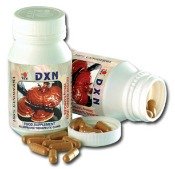Cancer Causing Agents to Avoid
Cancer causing agents in the form of highly toxic chemicals are present in the environment. Avoiding them as much as you can is an important part of prevention. They are also considered as work hazards. You are at a higher risk for many types of cancer if you work in places that require contact with these chemicals.
Exposure to them may also lead to other health problems. Let's find out more about these harmful chemicals and what types of cancer exposure to them may lead to.
Toxic Chemicals in the Environment
What is Asbestos
Asbestos is composed of minerals such as silicone which come in bundles of fibers. Asbestos fibers have 2 types - serpentine and amphibole. Serpentine asbestos fibers have a curly shape while amphibole asbestos fibers look like needles.
Where is asbestos found?
Since asbestos fibers are highly resistant to heat and are not conductors of electricity, they are used mainly for insulation purposes. However, they are also used to make textiles, floor tiles, brake and clutch parts of cars, shingles for roof and numerous other products.
Can exposure to asbestos lead to tumor growth?
No less than the U.S. Department of Health and Services and the IARC claim the carcinogenicity of asbestos. Exposure to cancer causing agents like asbestos is one of the risk factors for the disease. The following particular types are caused by asbestos:
- Lung tumor
Exposure to and inhalation of asbestos fibers increase risk for lung cancer. If you work with asbestos, it is expected that you develop the disease after 15 years. Your risk increases more if you also smoke.
- Mesothelioma
Mesothelioma attacks the thin membranes which line your chest and abdomen. Asbestos inhalation is associated with mesothelioma.
- Gastrointestinal
- Colorectal
- Throat
- Kidney
- Esophageal, and
- Gallbladder.
How can you be exposed to asbestos?
Its popularity waned in the United States when it was found to be one of the cancer causing agents. But some products are still made with asbestos fibers. Its use is still prevalent in poorer countries in Asia and Eastern Europe. Also, if you work or live in older buildings, asbestos fibers may still be present without you knowing it. You then inhale them without being aware that you do.
What are other health problems caused by asbestos?
When you inhale those tiny asbestos fibers that are in the air, those fibers may get trapped in the lungs and stay there for a long time. The fibers can accumulate causing scarring and inflammation in your lungs.
The inflammation can affect breathing and eventually, causing serious and even deadly health problems like . . .
- Asbestosis
This is a chronic lung disease that may be causing shortness of breath, coughing, and worse, permanent lung damage.
- Nonmalignant lung disorders
- Pleural disorders like pleural plaques, thickening or effusions
Pleurals are the membranes surrounding your lungs. Pleural effusions are characterized by abnormal collections of fluid between the thin layers of tissue lining the lung and the wall of the chest cavity.
If you have any of the pleural diseases caused by asbestos exposure, you may be at increased risk for tumors to develop in your lungs.
Remember that it can take 10 to 40 years for symptoms and signs of diseases related to asbestos to appear. It can be what's causing your migraine attacks.
What is Benzene

Benzene is a clear, colorless or light yellow and sweet-smelling chemical. It is an extremely flammable liquid. It is naturally present in volcanoes, crude oil, cigarette smoke and petroleum. Benzene evaporates into the air very fast.
Where is benzene found?
Aside from its natural sources, benzene is one of the cancer causing agents used to make other chemicals to manufacture synthetic fibers, plastics and resin. It can also be found in products such as detergents, lubricants, glues, pesticides, dyes and rubbers.
How does benzene get into your body?
Benzene is one of the cancer causing agents that is released to the air as a by-product of fuel combustion and tobacco burning.
Benzene is absorbed by your cells . . .
- through smoking. Cigarettes contain benzene. Dangers of smoking are plenty and are causing many awful health conditions such as heart disease.
- through exposure to effects of second hand smoke
- through gas pumping. The air around gas stations contains a higher level of benzene.
- from driving and
- from air pollution. Industrial plants and factories also emit benzene into the air. What's more dangerous is the benzene emitted by glues, paints and detergents inside homes and office or school buildings
How does benzene encourage tumor growth?
Benzene is one of the proven cancer causing agents because it damages your cells. It can hinder your bone marrow from making healthy red blood cells causing anemia to set in. According to the IARC, exposure to high levels of benzene for more than a year also harms your immune system causing your antibodies to become weak and you more vulnerable to infections.
Benzene also lowers the level of your white blood cell count. These health effects increase risk for different types of leukemia. In fact, the Department of Health and Human Services in the United States confirm that benzene is one of the leukemia causing agents.
What are other negative health effects of benzene?
A woman who is exposed frequently to high levels of benzene has increased risk for irregular menstrual periods. The tumor causing chemical can also affect her ovaries. If she is pregnant and is exposed to benzene from cigarette smoke, she might give birth to a baby with low birth weight, bone defects and congenital damaged bone marrow.
What is Formaldehyde
Formaldehyde is a colorless, flammable and strong-smelling gas. It is used to manufacture building materials such as plywood and fiberboard. Formaldehyde is also used to produce household products such as glues, adhesives and insulation materials.
It is one of the cancer causing agents used as fungicide and disinfectant. Formaldehyde is also combined with alcohol to produce formalin. Formalin is used as a preservative in mortuaries and medical laboratories.
What are the short-term effects of formaldehyde?
Exposure to formaldehyde can lead to negative short-term effects on your health such as:
- watery eyes
- burning sensations in the eyes, nose and throat
- coughing
- wheezing
- nausea and
- skin irritations.
By the way, not all people react to formaldehyde the same way. Some are more sensitive to its effects. Nevertheless, you still need to be protected from formaldehyde because it can damage your cells silently causing long term effects.
Can formaldehyde lead to tumor development?
In 1987, the U.S. Environmental protection Agency classified formaldehyde as one of the probable carcinogenic chemicals. In 1995, the IARC likewise concluded that formaldehyde is one of the known chemical agents considered as probable carcinogen.
It was only in 2004 that the same agency reclassified formaldehyde as one of the known tumor causing agents.
Prolonged exposure to high levels of formaldehyde without any protection may lead to these particular types of tumor:
- Nasal,
- Nasopharyngeal,
- Brain and
- Leukemia.
People like embalmers who work using formaldehyde are the most vulnerable to the negative effects of the chemical.
Today, even after it is already known that it is carcinogenic, this chemical is being used as an ingredient in har-straightening products. In fact, the Environmental Working Group had issued an investigative report on this issue.
Protect yourself from these highly toxic chemical agents that can trigger the onset of tumors. Cancer prevention is easier now that you are aware of the different types of cancer causing agents.
Related Pages You Might Like:
Are You Eating Cancer Causing Foods? | Cancer Causing Viruses | Harmful Effects of Radiation Exposure on your Health | Unhealthy Eating Habits To Get Rid Off
Cancer Prevention Home > What Causes Cancer > Carcinogenic Chemicals
Images Copyright (c) 123RF Stock Photo



